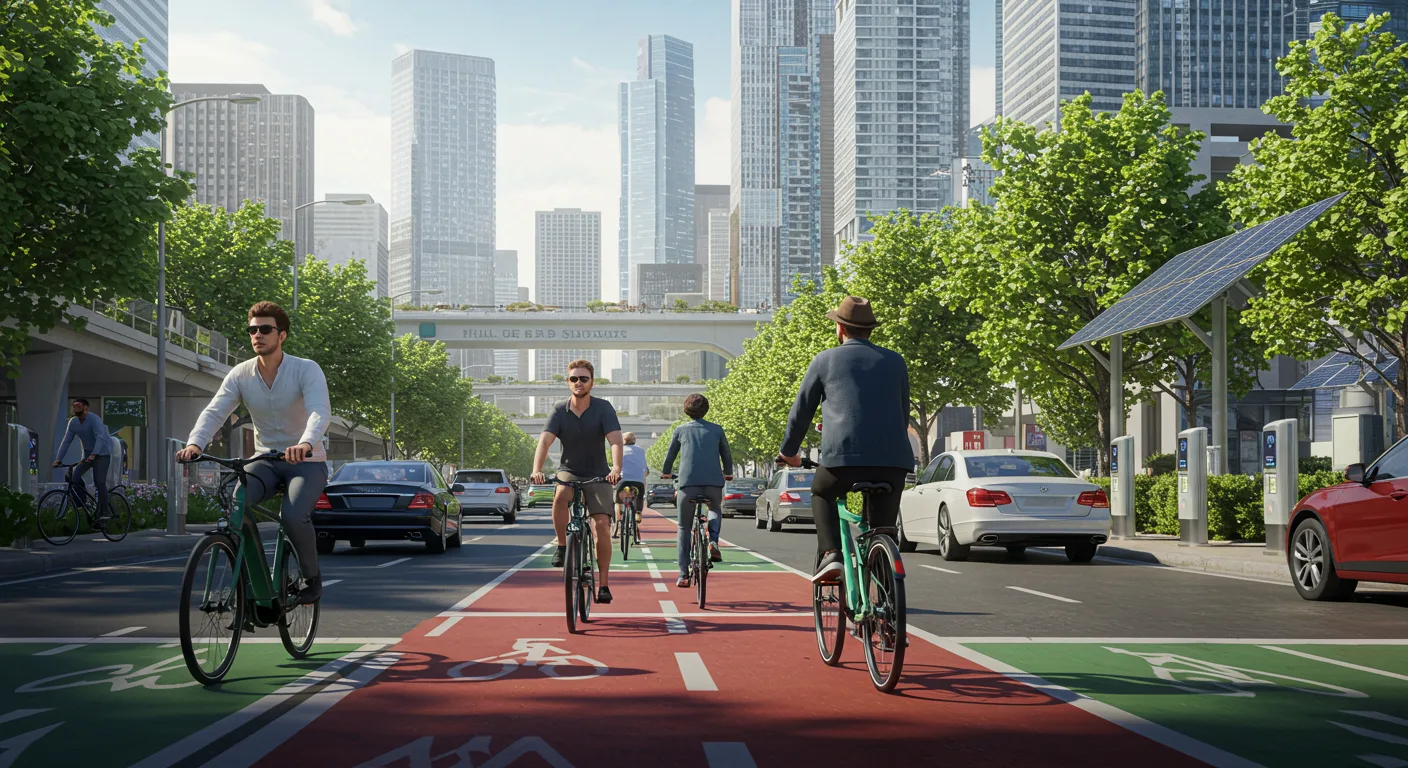1-Electric Bikes Offer a Cost-Effective Alternative to Cars in 2025
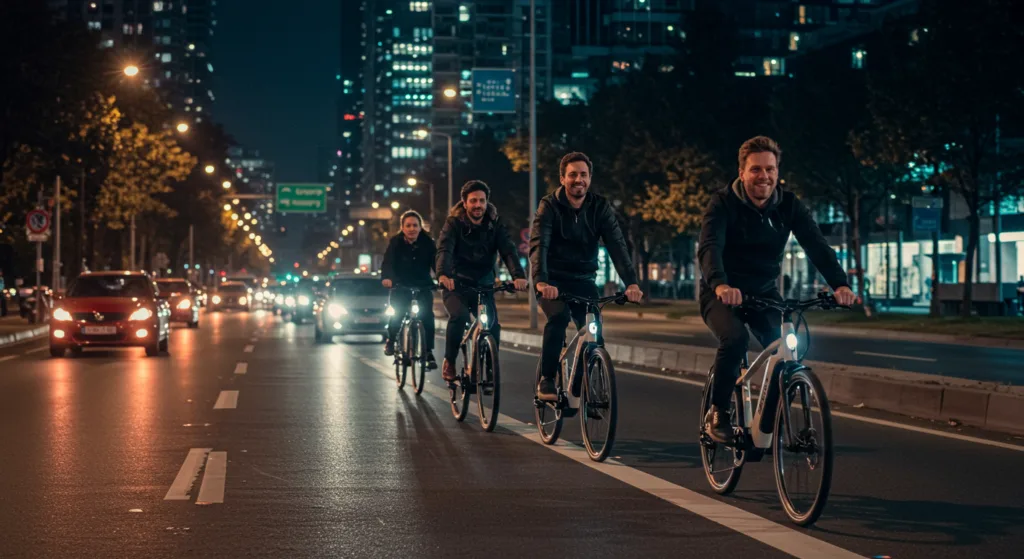
As fuel prices and vehicle maintenance costs continue to rise, more people are turning to electric bikes as a budget-friendly mode of transportation. In 2025, e-bikes have become a mainstream alternative to cars, offering significant savings in multiple areas:
1. Lower Purchase and Maintenance Costs
- A quality electric bike costs between $1,000 and $5,000, while an average new car in 2025 costs over $48,000 (according to automotive industry reports).
- E-bike maintenance is minimal—no oil changes, fewer moving parts, and lower repair costs compared to gas-powered vehicles.
- Battery replacements are needed every 3-5 years and cost around $300 to $800, much lower than the thousands of dollars spent on car repairs.
2. Significant Savings on Fuel and Energy
- The average gasoline price in 2025 has exceeded $4 per gallon, making commuting by car increasingly expensive.
- Charging an e-bike costs $0.10 to $0.50 per full charge, depending on local electricity rates, providing a range of 30-100 miles per charge.
- Compared to a car that gets 25-30 miles per gallon, e-bikes save over $1,000 annually on fuel for daily commuters.
3. Lower Insurance and Registration Costs
- E-bikes do not require insurance in most countries, whereas car insurance costs $1,500–$2,500 annually.
- No expensive vehicle registration fees, emissions testing, or licensing expenses.
With these cost advantages, e-bikes are making personal transportation more affordable and accessible, especially in urban areas where car ownership is becoming a financial burden.
2-E-Bikes Provide an Eco-Friendly Solution for Sustainable Urban Transport
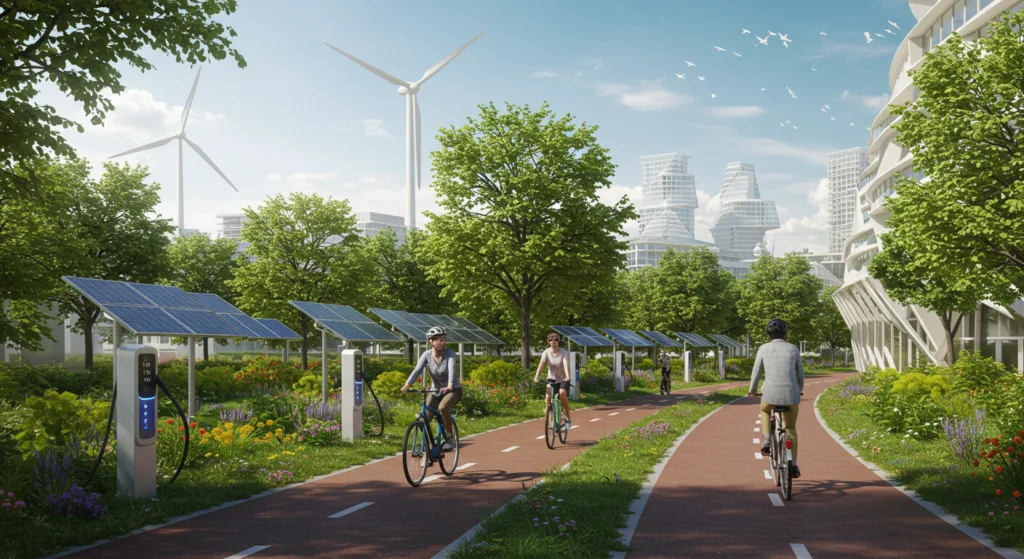
With global efforts to combat climate change, electric bikes are playing a crucial role in reducing carbon emissions and promoting sustainable mobility in cities.
1. E-Bikes Drastically Reduce CO₂ Emissions
- A gas-powered car emits 4.6 metric tons of CO₂ per year on average, according to the U.S. Environmental Protection Agency (EPA).
- In contrast, an e-bike emits 2 to 5 grams of CO₂ per kilometer, including energy production, battery manufacturing, and electricity consumption.
- Studies show that if 10% of car trips were replaced by e-bikes, urban emissions would drop by 7% or more.
2. Reduced Traffic Congestion and Air Pollution
- E-bikes take up far less space than cars, easing congestion in high-traffic areas.
- Cities with higher e-bike adoption, such as Amsterdam and Copenhagen, have reported 15–25% lower air pollution levels in urban zones.
- Noise pollution is also significantly reduced since e-bikes operate quietly compared to traditional motor vehicles.
3. Sustainable Energy Integration
- Many e-bike manufacturers are now incorporating solar-powered charging stations to further reduce their carbon footprint.
- Some cities are offering incentives for residents to charge e-bikes using renewable energy sources, aligning with global sustainability goals.
As governments push for cleaner transport solutions, e-bikes are leading the way in reducing urban carbon footprints and creating greener, more livable cities.
3-Electric Bicycles Make Commuting Faster and More Convenient
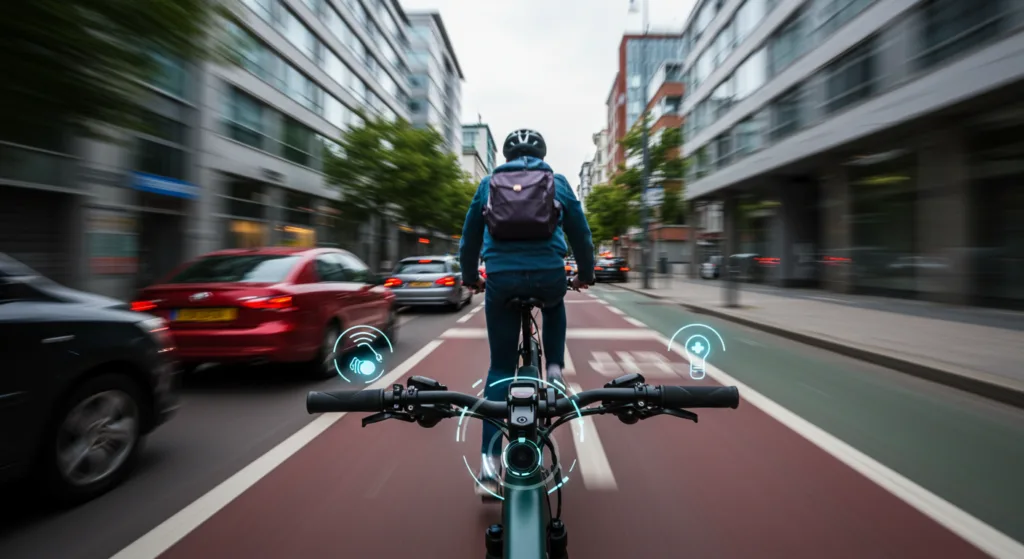
Time efficiency is one of the biggest reasons urban commuters are ditching cars in favor of electric bikes. E-bikes offer a faster, more flexible, and stress-free commuting experience, especially in congested cities.
1. Faster Travel Times in Urban Areas
- The average speed of an e-bike is 20–28 mph, while city traffic often slows cars down to an average of 15 mph during rush hours.
- In major cities like New York, London, and Paris, commuters report saving 15-30 minutes per trip by switching to e-bikes.
- Studies show that for distances under 10 miles, e-bikes can cut commute times in half compared to cars or public transport.
2. No More Parking Hassles
- Finding parking in busy cities can take 10–20 minutes on average, costing commuters hours per week in lost time.
- E-bikes eliminate this problem—riders can park almost anywhere, including bike racks, sidewalks, or even inside buildings.
- Cities like Berlin and San Francisco have added thousands of secure e-bike parking stations to encourage cycling.
3. Avoiding Traffic Jams and Public Transport Delays
- Gridlock in urban centers costs U.S. drivers over $1,500 per year in lost time and fuel, according to traffic studies.
- E-bike riders can take advantage of bike lanes, shortcuts, and car-free zones, avoiding major traffic bottlenecks.
- Unlike public transportation, which is often delayed or overcrowded, e-bike commuters enjoy consistent travel times and greater control over their schedules.
With improved infrastructure, designated bike lanes, and increasing commuter adoption, e-bikes are proving to be the ultimate time-saving transportation solution in 2025.
4-Advancements in Battery Technology Are Extending E-Bike Range
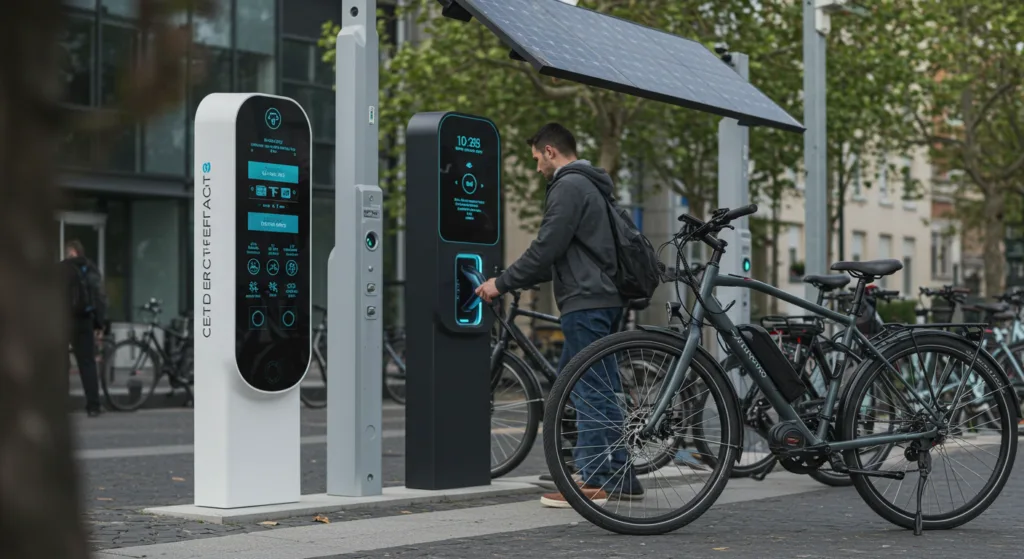
One of the biggest concerns for electric bike users has always been battery life and range. In 2025, rapid advancements in battery technology have significantly improved e-bike performance, making them a more viable alternative to cars and public transport.
1. Increased Battery Capacity and Longer Ranges
- Modern e-bike batteries now offer ranges of 50-120 miles per charge, compared to 30-50 miles in previous years.
- High-capacity lithium-ion batteries with energy-dense cells are now standard, with some models incorporating solid-state battery technology to further extend range.
- Fast-charging capabilities allow batteries to recharge up to 80% in less than an hour.
2. Lightweight and More Efficient Batteries
- The latest battery designs have become 30-40% lighter than older models, reducing the overall weight of e-bikes and improving ride efficiency.
- Enhanced battery management systems (BMS) optimize energy use, ensuring longer life cycles and improved durability.
3. Solar and Regenerative Charging Innovations
- Some e-bike models now feature solar-assisted charging, allowing riders to extend range while cycling in sunlight.
- Regenerative braking systems, previously seen in electric cars, are now integrated into high-end e-bikes, converting kinetic energy into battery power while braking or coasting downhill.
With these advancements, e-bike riders in 2025 can travel longer distances with greater confidence, reducing reliance on frequent charging and making e-bikes more practical for daily commuting and long-distance travel.
5-E-Bikes Improve Health by Encouraging More Physical Activity
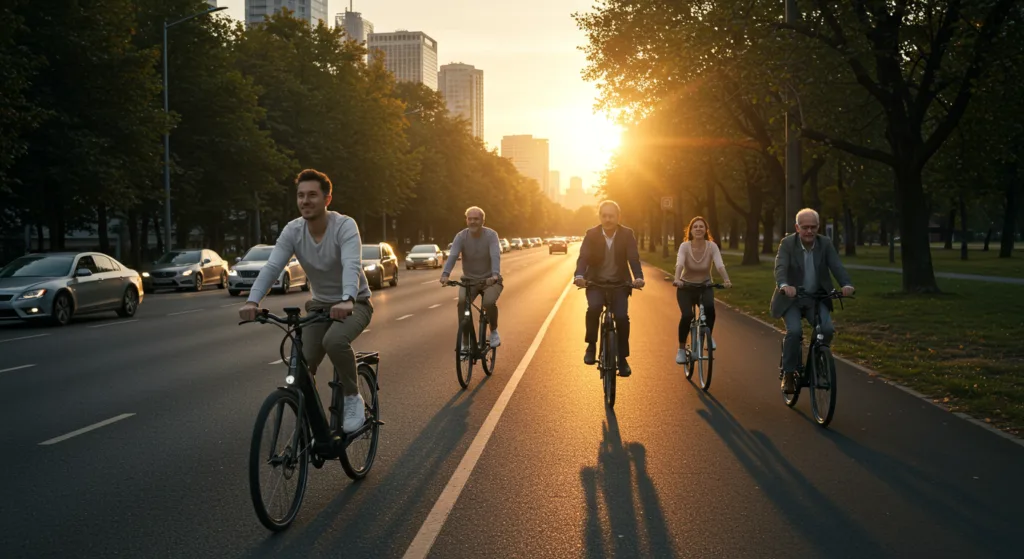
While e-bikes provide motorized assistance, they still promote physical activity, making them a great option for those looking to improve their health while commuting. Contrary to the myth that e-bikes make riders “lazy,” research shows they actually increase overall physical exercise.
1. More People Are Cycling Due to E-Bikes
- Studies show that e-bike riders ride 50% more often than traditional bike users, simply because the pedal-assist feature makes cycling more accessible.
- A study by the University of Zurich found that e-bike users burn nearly the same number of calories per trip as traditional cyclists, as they tend to ride longer distances and more frequently.
2. Low-Impact Exercise That Supports Joint Health
- E-biking provides low-impact cardiovascular exercise, reducing strain on knees and joints compared to high-impact sports.
- It’s particularly beneficial for older adults and individuals with mobility limitations, allowing them to stay active without excessive physical strain.
3. Mental Health Benefits of E-Biking
- Cycling outdoors reduces stress, improves mood, and boosts mental well-being, thanks to increased exposure to fresh air and sunlight.
- Many riders report that e-biking reduces commuting stress by eliminating traffic delays and making travel more enjoyable.
With e-bikes making exercise more accessible and convenient, more people in 2025 are choosing them as a healthier alternative to sedentary lifestyles.
6-Electric Bikes Reduce Traffic Congestion and Parking Hassles
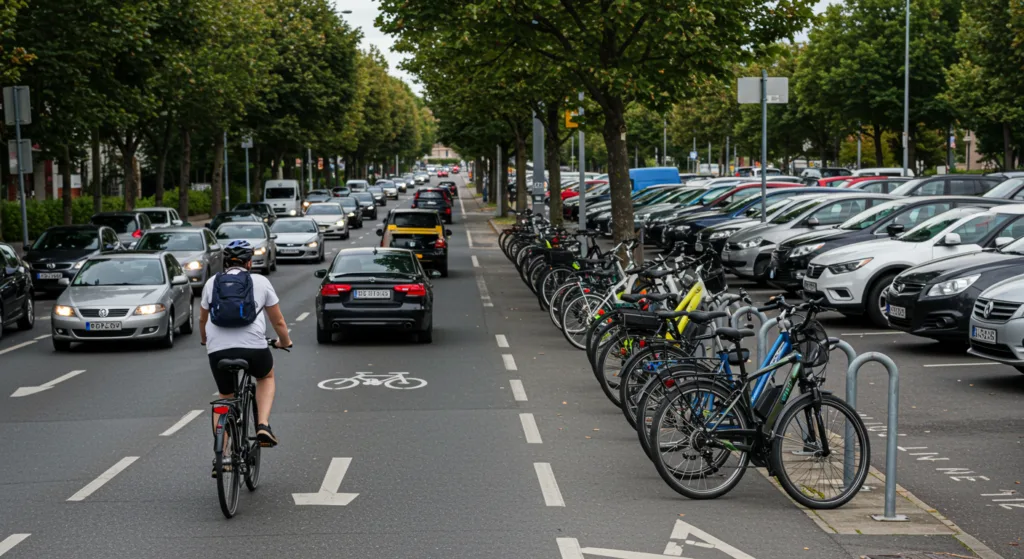
Urban traffic congestion is at an all-time high in 2025, but electric bikes are proving to be a game-changer in reducing gridlock and making city travel more efficient.
1. E-Bikes Take Up Less Space on the Road
- One e-bike takes up just one-fourth of the space of a typical car.
- Cities like Amsterdam, Copenhagen, and Barcelona have reduced traffic congestion by up to 30% by promoting e-bike-friendly infrastructure.
2. Fewer Cars on the Road, Less Gridlock
- A study found that if just 10% of drivers switched to e-bikes, traffic congestion in major cities would drop by 40%.
- E-bikes use dedicated bike lanes, allowing riders to bypass traffic jams and cut commute times significantly.
3. No More Parking Struggles
- Finding parking in busy urban areas can take 10-20 minutes per trip, costing commuters dozens of hours per year in wasted time.
- E-bikes can be parked almost anywhere, including bike racks, sidewalks, and even inside offices or homes.
- Many cities are now implementing secure e-bike parking stations with built-in charging points.
As cities continue to encourage e-bike usage, urban mobility is improving, making daily commuting faster, more efficient, and hassle-free.
7-Governments Are Supporting E-Bike Adoption with Incentives and Policies

Governments worldwide are actively promoting electric bikes as a solution to urban congestion, pollution, and rising transportation costs. In 2025, financial incentives and policy support are making e-bikes more accessible than ever.
1. Subsidies and Tax Incentives for E-Bike Buyers
- The U.S. introduced a 30% federal tax credit (up to $1,500) for e-bike purchases, encouraging more consumers to switch.
- Many European countries, including France and Germany, offer rebates between €500 and €2,500 on e-bike purchases, depending on income level.
- The UK’s Cycle to Work Scheme allows employees to buy e-bikes at a reduced cost through salary deductions.
2. E-Bike-Friendly Infrastructure and Traffic Laws
- Cities are investing in dedicated bike lanes, making e-bike commuting safer and more convenient.
- Some areas, like Oslo and Paris, are banning cars in certain zones, giving priority to cyclists and pedestrians.
- Governments are implementing speed limit regulations for different e-bike classes to ensure road safety.
3. Support for E-Bike Sharing Programs
- In 2025, more than 500 cities worldwide have e-bike sharing programs, allowing residents to rent bikes for short commutes.
- Governments are funding public charging stations to support long-distance e-bike use.
With increasing policy support, e-bikes are becoming a mainstream transportation option, making cities greener and more efficient.
8-The Rise of Smart Features Is Making E-Bikes More Efficient
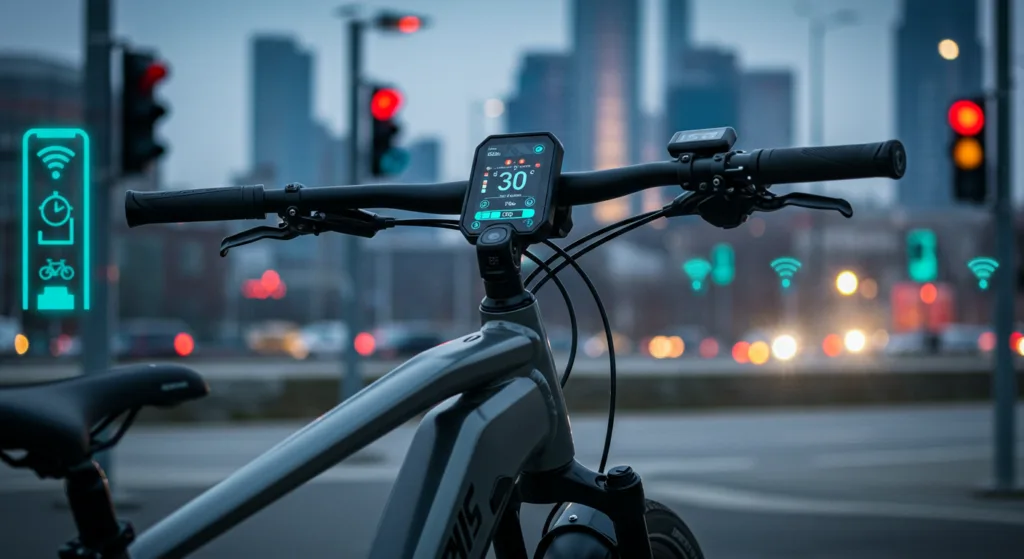
E-bike technology has evolved rapidly, integrating smart features that enhance performance, safety, and user experience.
1. AI-Powered Assistance and Smart Sensors
- Some e-bikes now feature AI-driven pedal assist, which adapts to the rider’s effort, road conditions, and terrain.
- Smart torque sensors adjust motor power automatically, optimizing energy use and extending battery life.
2. GPS Tracking and Theft Prevention
- E-bikes now come with built-in GPS and anti-theft systems, allowing users to track their bike in real-time via smartphone apps.
- Some models even feature remote locking and automatic alarms that activate if the bike is moved without authorization.
3. Connectivity and App Integration
- Riders can monitor battery levels, speed, and route planning via mobile apps.
- Some e-bikes sync with fitness apps like Strava and Apple Health, tracking calories burned and ride stats.
- Manufacturers are incorporating voice commands and touchless controls, allowing riders to interact with their e-bike hands-free.
These smart features are making e-bikes more user-friendly, safer, and energy-efficient, attracting even more commuters to the e-bike revolution.
9-Electric Bikes Are More Accessible to Riders of All Ages and Fitness Levels
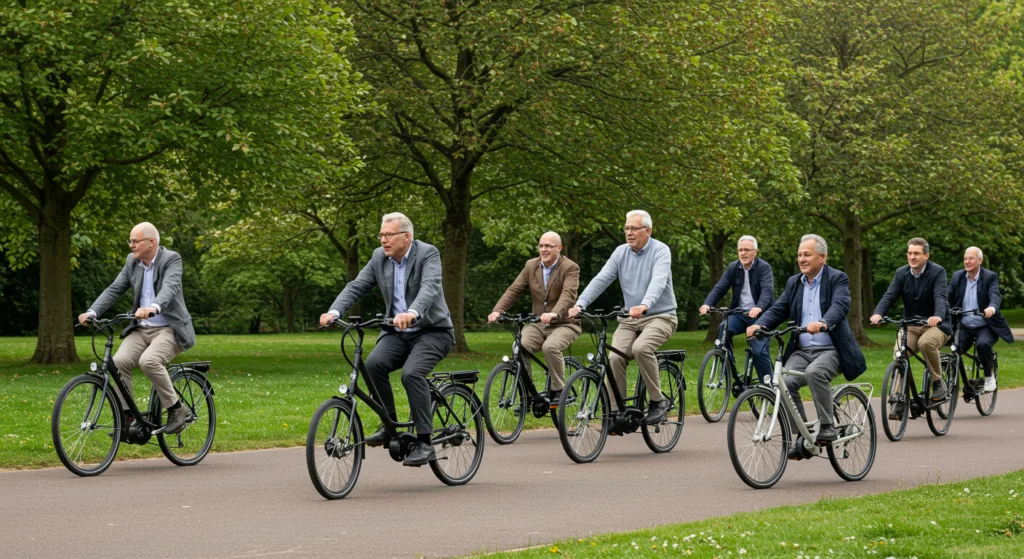
E-bikes are breaking down barriers to cycling, making it possible for people of all ages and fitness levels to enjoy the benefits of biking.
1. Pedal-Assist Makes Cycling Easier
- The adjustable assist levels on e-bikes allow riders to control how much effort they put in.
- Those with knee pain, arthritis, or limited mobility can cycle comfortably without excessive strain.
2. Senior Citizens Are Adopting E-Bikes at Record Rates
- Studies show that over 40% of new e-bike users in 2025 are 50 years or older.
- E-bikes allow seniors to stay active, avoid car dependency, and remain independent for longer.
3. E-Bikes Help People Recover from Injuries
- Physical therapists recommend e-bikes for low-impact rehabilitation, helping people regain strength after injuries.
- Adaptive e-bikes with three-wheel designs or customized frames are available for those with physical disabilities.
By making cycling more inclusive, e-bikes are allowing more people to embrace an active and sustainable lifestyle.
10-E-Bikes Are Revolutionizing Delivery Services and Urban Logistics
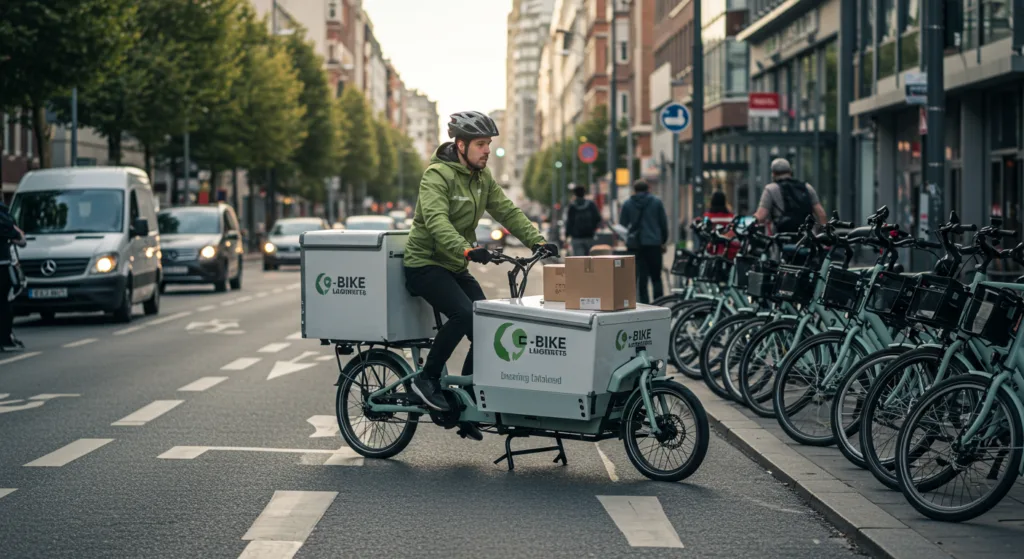
With the rise of online shopping and food delivery services, e-bikes are transforming the way goods are transported in cities.
1. Faster and More Cost-Effective Deliveries
- E-bike couriers can navigate bike lanes and narrow streets, avoiding traffic congestion and reducing delivery times by 30% compared to cars.
- They have lower operational costs—no fuel expenses and minimal maintenance.
2. Growing Demand in Last-Mile Delivery
- Major companies like Amazon, Uber Eats, and DHL are expanding their e-bike fleets for urban deliveries.
- E-bikes can deliver packages up to 50 lbs efficiently without contributing to emissions.
- Some cities now mandate e-bike deliveries in low-emission zones.
3. Cargo E-Bikes Are Replacing Vans
- Cargo e-bikes equipped with large storage compartments are now replacing delivery vans in many cities.
- In London and New York, companies using e-cargo bikes have cut delivery emissions by 60%.
- Businesses save on parking fees, fuel, and congestion charges, making e-bike deliveries more profitable.
With urban logistics shifting towards sustainability, e-bikes are becoming the backbone of efficient and eco-friendly last-mile delivery.
Electric bikes are no longer just a trend—they are transforming the way we commute, stay active, and reduce our environmental impact. With government incentives, smart technology, and increasing accessibility, e-bikes are becoming the go-to solution for urban mobility in 2025. Whether you’re looking to save money, improve your health, or streamline deliveries, there’s never been a better time to embrace e-bikes.
If you found this article useful, share it with your friends on social media and help spread the e-bike revolution! 🚴♂️⚡


